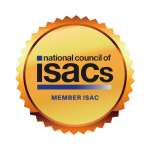Summary: A case study, titled "Water Utility Resilience: A Case Study of the 2021 Marshall Fire,” offers a detailed look into the response and recovery efforts of water utilities near Boulder, Colorado. The case study was commissioned by the Water Research Foundation.
Analyst Note: Amid earth’s warming climate, wildfires are projected to grow more frequent and intense. Given that, water and wastewater utilities are encouraged to review their wildfire emergency response plans and update them based on the lessons learned from this case study and from other recent fires like the Los Angeles wildfires earlier this year.
According to the abstract, the “the Marshall Fire burned over 6,000 acres of Boulder County, CO, destroying or damaging over 1,200 structures in a primarily suburban community. Water utilities, including City of Louisville, Town of Superior, and East Boulder County Water District, served critical roles during the disaster, including providing the primary water supply for firefighting, establishing mutual aid across jurisdictions, and addressing damaged infrastructure and water quality concerns during the reestablishment of service. The operability of the water treatment plants across all jurisdictions and the ability of the water utilities to maintain pressure in their distribution system allowed firefighters to save thousands of properties. However, due to shutdowns of other lifelines (e.g., electricity, natural gas, telecommunications) and their interdependencies with the water utilities, significant challenges were encountered during and after the fire.”
Wildfires present a direct risk to property and water and wastewater infrastructure assets, in addition to potential degradation of the water supply, according to EPA. When drinking water systems are damaged in a fire, “we can have ash, smoke, soot, other debris and gases get sucked into the water piping network,” said Andrew Whelton, a Purdue University engineering professor. WaterISAC has previously reported about the threat of volatile organic compounds (VOCs) resulting from fires to water utilities.
Original Source: https://www.waterworld.com/water-utility-management/article/55295955/how-a-wildfire-challenged-boulder-countys-water-supply-in-the-matter-of-hours
Additional Reading:
- An Independent Investigation into the 2023 Hawaii Wildfires Offers Preparedness and Resilience Recommendations to Reduce Risk
- Public Water Systems and Wildfires
Mitigation Recommendations:
- EPA – Incident Action Checklist – Wildfire
- EPA – Wildfire Conditions and Risk Map for Utilities
- EPA – Addressing Contamination of Drinking Water Distribution Systems from VOCs After Wildfires
Related WaterISAC PIRs: 16, 17, 18

